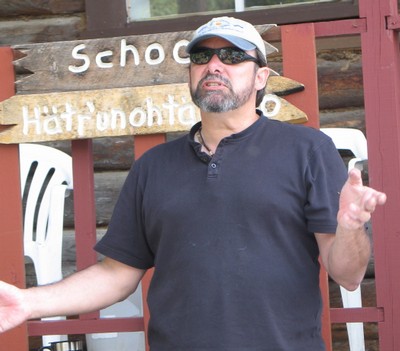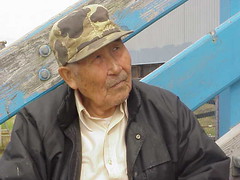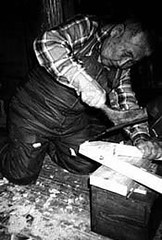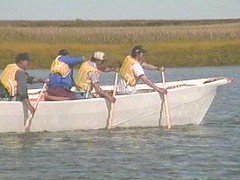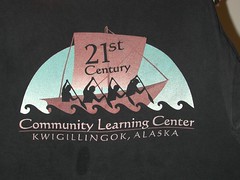Healing Journey on the Yukon River

Yukon River Healing Journey to Begin on June 22 Opening Ceremony Hosted by Tr’ondek Hwech’in First Nation in Moosehide, Yukon Territory
1,500 mile canoe journey aims to unite cultures, protect environment, and address climate change concerns.
LINK TO: YRITWC HOME/WEB PAGE
At 1 pm on June 22, 2007, the Tr’ondek Hwech’in First Nation will host opening ceremonies at Moosehide, Yukon Territory, to initiate the Healing Journey, a celebration of culture, a call to action, and an urgent message to the world. The 1,500 mile canoe journey will head to St. Mary's, Alaska to celebrate the 10th Anniversary YRITWC Summit from August 9-13.
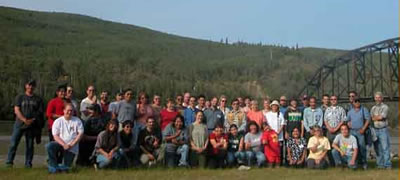
Moosehide, a traditional village, is located near Dawson, on the Yukon River.
Fulfilling an ancient prophecy of uniting the indigenous peoples through water travel, the Healing Journey participants will shove off with traditional canoes and contemporary boats and paddle for approximately seven weeks, visiting all indigenous communities along the way.
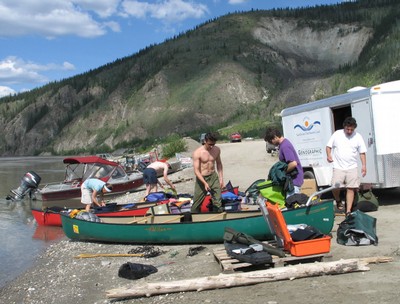
Visits will include a traditional meal and cultural exchange, dancing and drumming, and a talking circle to begin to mend the past and forge a commitment to a common future based on environmental stewardship and healthy communities. In honor of the Healing Journey, a traditional T’lingit dugout canoe has been carved by the Yakutat T’lingit Tribe and will be dedicated to the YRITWC in July during the nearly two month long Journey.
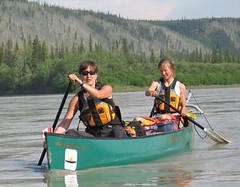
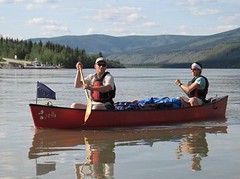
As the Healing Journey travels downriver, each participating community will share observations and concerns related to climate change, which will be documented and brought to the Summit in St. Mary’s. The Healing Journey will also draw attention to innovative solutions such as renewable energy and resource management based on traditional knowledge. One of the canoes will have a water quality probe that will take a continuous water chemistry profile of the entire journey as it travels downriver.
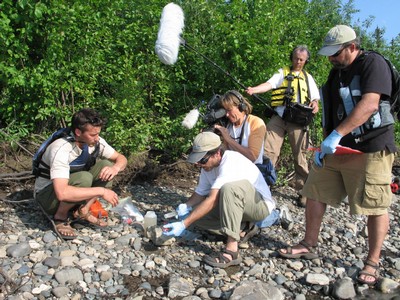
Harold Gatensby, a founding Board member of the YRITWC from Carcross-Tagish First Nation, stated, “The Healing Journey is the result of many years of hard work and commitment to clean water and healthy communities. We could not carry out this Journey without the support of all the First Nations and Tribes who are part of the Watershed Council.”
LINK TO: YRITWC BROCHURE (.pdf)
Jon Waterhouse, YRITWC Assistant Director and lead paddler in the Healing Journey, is from the Jamestown Sk’lallam Tribe in the coast Salish region. He said, “We hope to feed the interest of the youth to carry on this tradition of traveling by water and protecting our environment. The Healing Journey is for the whole watershed and beyond.”
The Yukon River Inter-Tribal Watershed Council is an indigenous grassroots organization dedicated to the protection and preservation of the Yukon River Watershed. The YRITWC conducts research, provides technical assistance and training to facilitate the development and exchange of information, and strives to raise awareness about opportunities to promote the health of the watershed. The YRITWC is comprised of 65 Tribes and First Nations in Alaska and Canada who rely on the Yukon River basin for survival.
LINK TO: YRITWC STRATEGIC PLAN (.pdf)
The Healing Journey and Summit are being sponsored in part by National Geographic Society and IBM’s Genographic Legacy Fund, First Nations Development Institute, the Environmental Protection Agency, and the Alaska Conservation Foundation.
Text originally published by John Graham
Photos from YRITWC website
View more photos from Matt here!
==============================
Listen to an audio transcript...Associate Director, Alaska Region, of the YRITWC speaking of the Journey...YRITWC appearing on Native America Calling, Aug. 2007.
